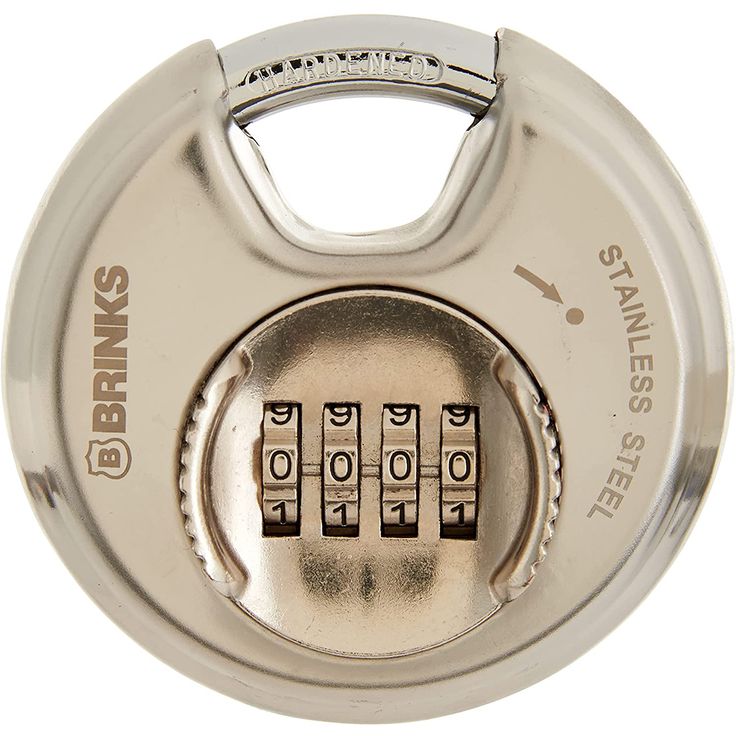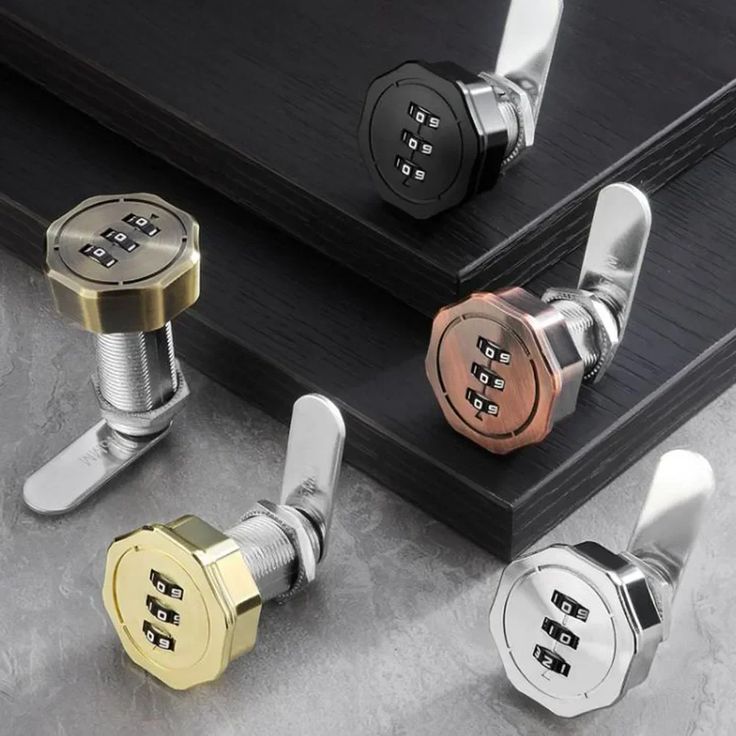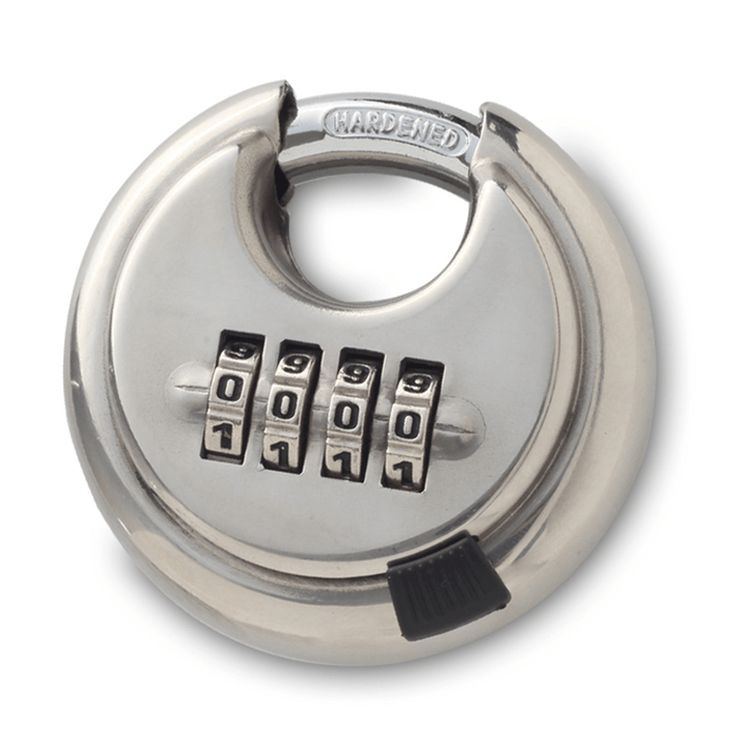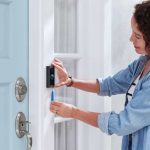Combination locks secure our belongings using a sequence of numbers or symbols. You need to enter the correct sequence to open these locks. Traditionally, these locks use a single dial. The dial rotates to different positions to set the numbers. They do not require keys, which makes them popular for everyday security. You can find them on school lockers, gym lockers, and safes. How to unlock combination lock? Understanding how these locks work helps in both using them effectively and troubleshooting, should you forget the combination. We will explore the basic operation, inner mechanics, and strategies to unlock these devices.

Basic Operation of Combination Locks
Understanding the basic operation of combination locks is crucial for both use and troubleshooting. This section will guide you through the initial steps of how to unlock combination lock, specifically focusing on the process of dialing the combination.
Dialing the Combination
Dialing the right combination is the key to unlocking. Follow these steps to correctly dial the combination on a typical combination lock:
- Start by Turning the Dial: Spin the dial several times clockwise. This resets the lock mechanism.
- Dial the First Number: Continue turning clockwise until you reach the first number of the combination.
- Turn to the Second Number: Change direction. Rotate the dial counterclockwise. Pass the first number once, then stop at the second number.
- Finish with the Third Number: Turn the dial clockwise directly to the third number without passing the second number again.
- Open the Lock: Pull up the shackle to open the lock once you have finished dialing the combination.
These steps, when followed correctly, allow the lock’s internal mechanism to align the internal gears and cams, setting the stage for successful unlocking.
Exploring the Inner Mechanics of Combination Locks
When trying to unlock combination locks, insight into their inner workings is key. Let’s delve into the mechanics.
The Role of Cams and Notches
Every combination lock has an intricate system inside. Cams, which are wheel-like discs, play a central role. These cams turn as you dial the combination. Along the edge of each cam is a notch. The notches are crucial for unlocking. The lock’s shackle only releases when the notches align perfectly. This alignment occurs when you dial the correct combination. Think of it as a secret handshake between the dials and the lock’s interior. This handshake signals the lock to open. To summarize, the cams and notches must line up for the lock to open. Understanding this helps you envisage what happens inside the lock as you input your combination.

Decoding the Number of Possible Combinations
Unlocking a combination lock isn’t just about turning the dial properly; it’s also about understanding the vast number of potential combinations that lock could have. Comprehending this might seem daunting, but with a simple mathematical perspective, it can become more manageable.
Permutation versus Combination
First, it’s important to distinguish between a permutation and a combination, as these concepts are foundational in the world of locks. In the context of combination locks, what we’re really dealing with is permutations. A permutation pays attention to the order of the numbers, so each sequence is unique based on its order. For example, the order 1-2-3 is different from 3-2-1. A combination, on the other hand, does not regard order; so 1-2-3 is the same as 3-2-1.
A standard combination lock, like the kind you find on lockers, often has a dial with 40 numbers and requires 3 numbers for the sequence. Using basic math, there should technically be 40 x 40 x 40 possibilities, which amounts to 64,000 different permutations. However, due to mechanical limitations and manufacturing tolerances, this number is not accurate in practice. Certain sequences cannot exist because of the physical design, which reduces the actual number of unique permutations.
By understanding that a combination lock operates with permutations, we realize that knowing even one number of the combination can drastically reduce the number of trials needed to unlock it. Recognizing the difference between permutations and combinations is crucial for anyone attempting to crack the code of these locks without the original sequence at hand.
Rules and Patterns of Combination Locks
Decoding a combination lock extends beyond mere intuition; it requires knowledge of specific rules and patterns. Let’s explore these fundamental truths.
Understanding Combination Blocks
Combination locks follow specific rules that create block patterns in their sequences. These rules are essential for reducing the possibilities when cracking a lock’s code. Here’s a clearer view of these rules:
- Even and Odd Groupings: Lock sequences are confined to either all-even or all-odd numbers.
- Sequential Gaps of Four: Within a lock’s sequence, each number leads to the next by adding four.
- Fixed Number Sets: A set pattern of ten numbers often recurs in different parts of the combination.
To crack a combination lock, you start by pinpointing a block — a group of potential sequences with interlinked numbers. Identifying one number narrows down the others due to these predefined patterns. For instance, if you know the last number is 14, you’ll look at a specific block of numbers including 14. This reveals the limited range of potential numbers for the first two parts of the sequence.
Mastering these blocks accelerates the lock cracking process. It turns an overwhelming number of permutations into a manageable set of sequences. You no longer need to try every possible combination. Instead, you focus on the most probable sequences based on the rules of the combination blocks.

Techniques for Discovering the Last Digit
Identifying the Real Notch Among Fakes
Discovering the last digit in a combination lock involves pinpointing the genuine notch among decoys. This process is both intriguing and vital for cracking combination locks without the original code. Here’s how you can accurately identify the real notch:
- Apply Tension and Rotate: Begin by applying slight upward pressure on the shackle while rotating the dial. This tension is crucial as it exposes the notches or sticking points.
- Identify Sticking Points: As you rotate the dial under tension, the dial will exhibit slight resistance at certain points known as ‘sticking points’. Not all sticking points are genuine; some are shallow traps meant to mislead.
- Record and Analyze Sticking Points: Carefully record these points. Typically, one encounters multiple sticking points (usually 12), but only one is the real notch. The others are deliberately shallower and do not facilitate unlocking.
- Detect the Deepest Sticking Point: Through careful analysis and perhaps a bit of trial and error, identify the deepest sticking point. The deepest point corresponds to the genuine notch which aligns perfectly with the locking mechanism.
- Verifying Through Slight Movement: To further verify, slightly jostle the shackle after identifying a potential real notch. If the notch allows more freedom in dial movement without opening, it’s probably a fake.
Using this technique allows efficient progression to the next stages of cracking the combination. Remember, identifying the correct sticking point drastically reduces the guesses needed to unlock the combination lock.
Faster Methods for Trying Out Combinations
Finding the combination to a lock can be time-consuming. Efficiently testing possible combinations is key to speed. In this section, we’ll look at a quicker method to attempt different combinations.
Utilizing a Spreadsheet Calculator
A spreadsheet calculator can drastically cut down the time required to test combinations. Here is how to use one:
- Input Known Information: Start by entering any confirmed numbers of the lock’s combination into the spreadsheet.
- Set Parameters: Use the rules of combination blocks to restrict the range of possibilities the spreadsheet will process.
- Automate the Process: The spreadsheet will cycle through the probable combinations. It does this based on the rules and patterns of the lock.
- Track Progress: As the spreadsheet works, keep a log of the combinations you’ve tested. This ensures you don’t try the same one twice.
- Shorten the List: Look for patterns in your logs to possibly eliminate some guesses. This further speeds up the process.
Using a spreadsheet calculator is a systematic and organized approach. It takes advantage of mathematical patterns and computes faster than manual trial and error. Tools like this are incredibly useful for both casual lock owners and professionals.
Strategies for Open Locks
Once you have identified the last digit of the combination, you can try different strategies to open the lock. These strategies can be especially helpful if you have an open lock and want to know its combination for future use. Below, we explore optical decoding and shackle techniques that can aid in this process.
Optical Decoding and Shackle Techniques
Optical decoding is a method to uncover the first two digits of an open lock’s combination. Simply shine a light inside the shackle hole. As you turn the dial, you should spot notches on the cams inside. Align the notches and take note of the numbers. To decipher the shackle technique, you’ll need to partly engage the shackle and spin the dial counter-clockwise. At a certain point, the dial will resist, indicating the number you should add ten to get the first digit.
Both methods require a keen eye for detail and practice to perfect. However, once you get the hang of these techniques, finding the combination to an open lock becomes a swift task. These strategies are particularly useful if the lock is yours and you want to reset its combination without resorting to destructive methods.
Tips and Advice for Efficient Unlocking
Unlocking combination locks with speed and precision requires certain tactics. Here, we provide tips to enhance your efficiency.
Observational Tactics
Observational skills are key in quickly unlocking combination locks. Here are a few tactics:
- Look for Wear Marks: Check the dial for signs of frequent use. Often-used numbers can show wear.
- Listen for Clicks: As you turn the dial, listen for any audible clicks or changes in resistance.
- Monitor the Shackle: Feel for changes in shackle tension as you turn the dial. It can hint at the right combination.
- Note the Starting Position: Before spinning the dial, note where it starts from. This could be part of the combination.
- Watch Others: If it’s a public locker, observe how others operate their locks. Not directly, to respect privacy, but look for general habits.
- Check for Previous Combinations: When people re-lock, they may not spin the dial away. The last number might still be aligned.
By sharpening your observations, you can often bypass lengthy trial-and-error processes. Remember, practice makes perfect and attention to detail can be your greatest ally in unlocking combination locks.
Extending Skills Beyond Combination Locks
The World of Lockpicking and Security Bypassing
Expanding your expertise beyond combination locks opens up a vast new field: lockpicking and security bypassing. This arena challenges enthusiasts to explore and defeat various types of security systems.
- Understanding Different Lock Mechanisms: Begin by learning about different locks such as pin tumbler locks, disc detainer locks, and electronic locks. Each type has unique mechanisms and vulnerabilities.
- Practicing with Pick Tools: Get a set of lock picks and practice tools. These help you develop the fine motor skills needed to manipulate lock components effectively.
- Joining Locksport Communities: Engage with online forums or local groups. These communities share insights, techniques, and challenges. They foster learning and improve skills through collective knowledge.
- Studying Security Bypass Techniques: Delve into advanced topics like bypassing fingerprint scanners and cracking safe codes. Resources such as tutorials, videos, and courses can support your learning.
- Adhering to Legal and Ethical Guidelines: Always ensure that your practice is legal and ethical. Use your skills for benign purposes and respect privacy and ownership.
Understanding and navigating the challenges in unlocking devices and security systems not only broadens your skills but also enhances your problem-solving capabilities. This knowledge can prove invaluable in critical situations or simply as a stimulating hobby. Mastering these techniques assures you of not just opening locks, but also opening new opportunities and challenges in the realm of security.

